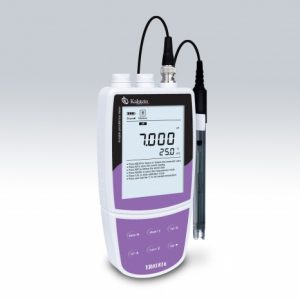Iodine is a human-required trace element for the synthesis of thyroid hormones. These hormones are responsible for regulating various physiological processes, such as growth, development, metabolism and reproductive function. However, despite its importance, iodine deficiency is a major health problem in much of the world. According to figures from the World Health Organization, more than 30 per cent of the world’s population suffers from insufficient iodine consumption.
The iodine content in food and water depends on the amount of this mineral in the soils. In coastal areas, the most important sources of iodine are fish, seafood and drinking water. However, areas near mountain ranges have a low iodine content in the soils, so the contribution of this mineral from food is inadequate.
Disorders caused by iodine deficiency include mental retardation, hypothyroidism, goiter, and other abnormalities of growth and development, in varying degrees of severity. For this reason, efforts have been made at the national and international levels to correct iodine deficiency, for example, the use of iodized salt in countries with proven iodine deficiency.
Use of iodine for food fortification
Salt fortification programs have been implemented in many countries, including Venezuela, as this is a feasible and inexpensive method to correct iodine deficiency in the population. Salt enrichment with iodine is mandatory in Canada, Venezuela, and some parts of Mexico, while in the United States, it is voluntary. In countries such as Denmark, Australia and New Zealand, the use of iodized salt in the bread-making process is mandatory.
The incorporation of iodine in the salt is the most used strategy because it is a product that is consumed during the year, almost without variations in the amount ingested; the production of salt is limited to few centers, so it offers facilities to perform the control of the iodine content; neither the taste nor the smell of salt, are affected by the addition of iodide; the use of salt as a vehicle to increase iodine in the diet, is an economic strategy.
The use of other foods as a means of supplying the population with iodine has been considered and studied, for example drinking water, sugar, fermented fish, fish sauce, edible vegetable oils and fats, cereal grains, rice flours, wheat and corn, seasonings and seasonings, milk powder or liquid, bread and broth cubes prepared with iodized salt. In addition to these alternatives, the use of fertilizers rich in iodine has also been tested, to be used in crops, with the intention of increasing the level of iodine present in the harvested plant.
Why is iodine testing important and how is it done?
In countries where iodine fortification is mandatory, the food processing industry and the food-requirements agency need to conduct regular checks of the food in order to verify compliance.
Iodine levels in food are assessed using the ion selective electrode, also known as ISE. It is an analytical technique that allows to determine the activity of ions in an aqueous solution, measuring the electrical potential.
Ion-selective electrodes are modern analytical tools that facilitate the assessment of the ionic activity of samples, quickly and directly. They form a versatile, affordable and advantageous measurement system, compared to other techniques, for example, it is relatively economical and easy to perform. In addition, it has a wide iodine concentration measurement range. HERE
Kalstein iodide ion meters
At Kalstein we offer a wide variety of iodide ion meters, from the YR series. You can choose the one that best suits your needs. Kalstein iodide ion meters, which offer the possibility to select the concentration units, e.g. ppm, mg/L and MOL/L, simplify the measurement process by performing direct ion concentration reading. In addition, they are designed with a backlit LCD screen and offer a set-up menu that allows the number of calibration points, stability criteria, temperature, unit, date and time, among others, to be set. For more information on Kalstein iodide ion meters, visit the link HERE


